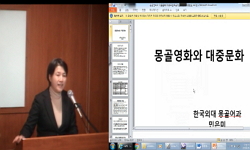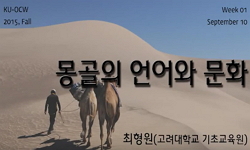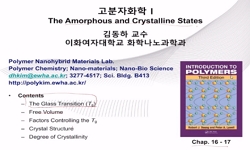From July to September in 2011, the joint research team of Mongolia and Kazakhstan has excavated a wall painted tomb at Ulaan Kherem, Bayannuur sum, Bulgan province, Mongolia. The tomb is the first excavated mural tomb in Mongolia to date. The tomb is...
http://chineseinput.net/에서 pinyin(병음)방식으로 중국어를 변환할 수 있습니다.
변환된 중국어를 복사하여 사용하시면 됩니다.
- 中文 을 입력하시려면 zhongwen을 입력하시고 space를누르시면됩니다.
- 北京 을 입력하시려면 beijing을 입력하시고 space를 누르시면 됩니다.

몽골 볼간 아이막 바양노르 솜 울란 헤렘 벽화묘 연구 = The Wall Painting Tomb at Ulaan Kherem, Bayannuur sum, Bulgan province, in Mongolia
한글로보기https://www.riss.kr/link?id=A100283302
- 저자
- 발행기관
- 학술지명
- 권호사항
-
발행연도
2014
-
작성언어
-
- 주제어
-
KDC
900
-
등재정보
KCI등재
-
자료형태
학술저널
- 발행기관 URL
-
수록면
1-25(25쪽)
- DOI식별코드
- 제공처
-
0
상세조회 -
0
다운로드
부가정보
다국어 초록 (Multilingual Abstract)
From July to September in 2011, the joint research team of Mongolia and Kazakhstan has excavated a wall painted tomb at Ulaan Kherem, Bayannuur sum, Bulgan province, Mongolia. The tomb is the first excavated mural tomb in Mongolia to date. The tomb is approximately dated to the 7th centuries. The structure and mural subjects of the tomb, which are similar to those mural tombs in the subsidiary burials of the Zhaoling, the tomb of Tang Taizong, follow the tradition established by the nomadic people like Xianbei in the late Northern Dynasties from the 6th century. Not only the tomb structure and murals but also the burial objects from the Ulaan Kherem Tomb clearly exhibit the tastes of nomadic people residing along the Silk Road and the Stepp Route. In order to understand the characteristics of the Ulaan Kherem Tomb, I analyzed painting subjects and compare them with Chinese examples. In the stylistic analysis of figure paintings, those in the Ulaan Kherem Tomb resemble the figures in the subsidiary burials of the Zhaoling constructed in the second half of the 7th century. Some of the Zhaoling mural tombs belong to the Turk origin occupants. Next, I examined another recently excavated Turk period tomb(678) at Zaamar sum, Tuv province from which a stone tomb epitaph was excavated. The tomb occupant belonged to Pugu tribe. The Zaamar Tomb helps us date the Ulaan Kherem Tomb to the second half of the 7th century, especially around 650s-670s. The stylistic analysis of wall paintings and burial objects from the Ulaan Kherem Tomb also suggests that the tomb can be dated to around 650s-670s. It was during the Tang occupational period after the collapse of the 1st Turk Empire. It is possible that the Pugu ruler governing Today`s Bayannuur region invited a Chinese artisan to construct his tomb, but he certainly embodied his nomadic tastes and culture into his burial exhibited by the burial practice and rich gold and silver ornaments, which were the result of the broad interactions from Byzantine to China.
동일학술지(권/호) 다른 논문
-
현대 할하 몽골어 보조동사의 목록 연구 -기존 현대 할하 몽골어 보조동사 검증을 통한 목록 제시-
- 중앙아시아학회
- 송병구 ( Byeong Gu Song )
- 2014
- KCI등재
-
- 중앙아시아학회
- 주경미 ( Kyeong Mi Joo )
- 2014
- KCI등재
-
한몽영웅신화(韓蒙英雄神話)에서의 천강리념(天降理念)과 치병(治病)모티프(motif) 비교고찰(比較考察)
- 중앙아시아학회
- 이선아 ( Sun A Lee )
- 2014
- KCI등재
-
- 중앙아시아학회
- 신만리
- 2014
- KCI등재





 KCI
KCI KISS
KISS






